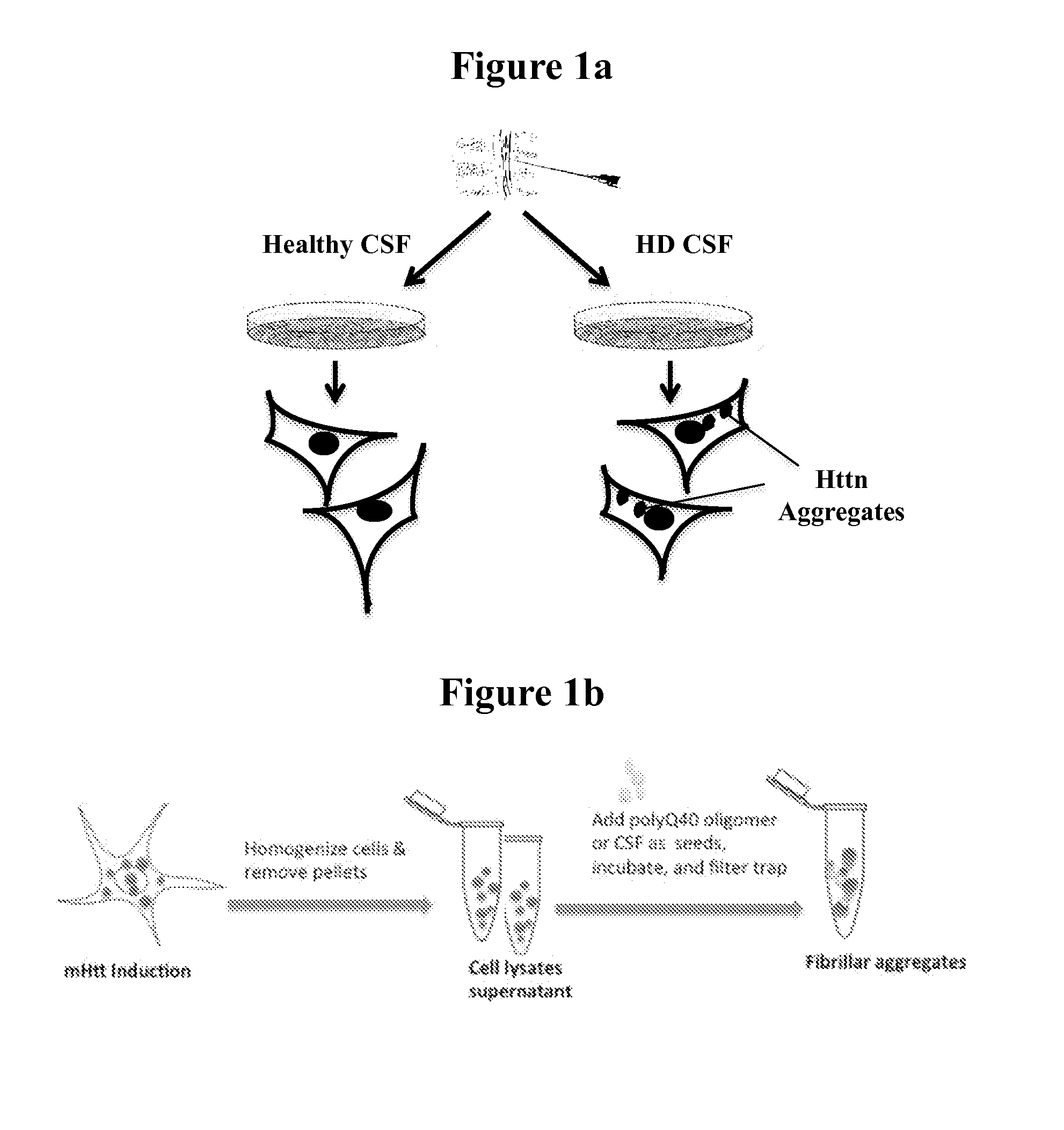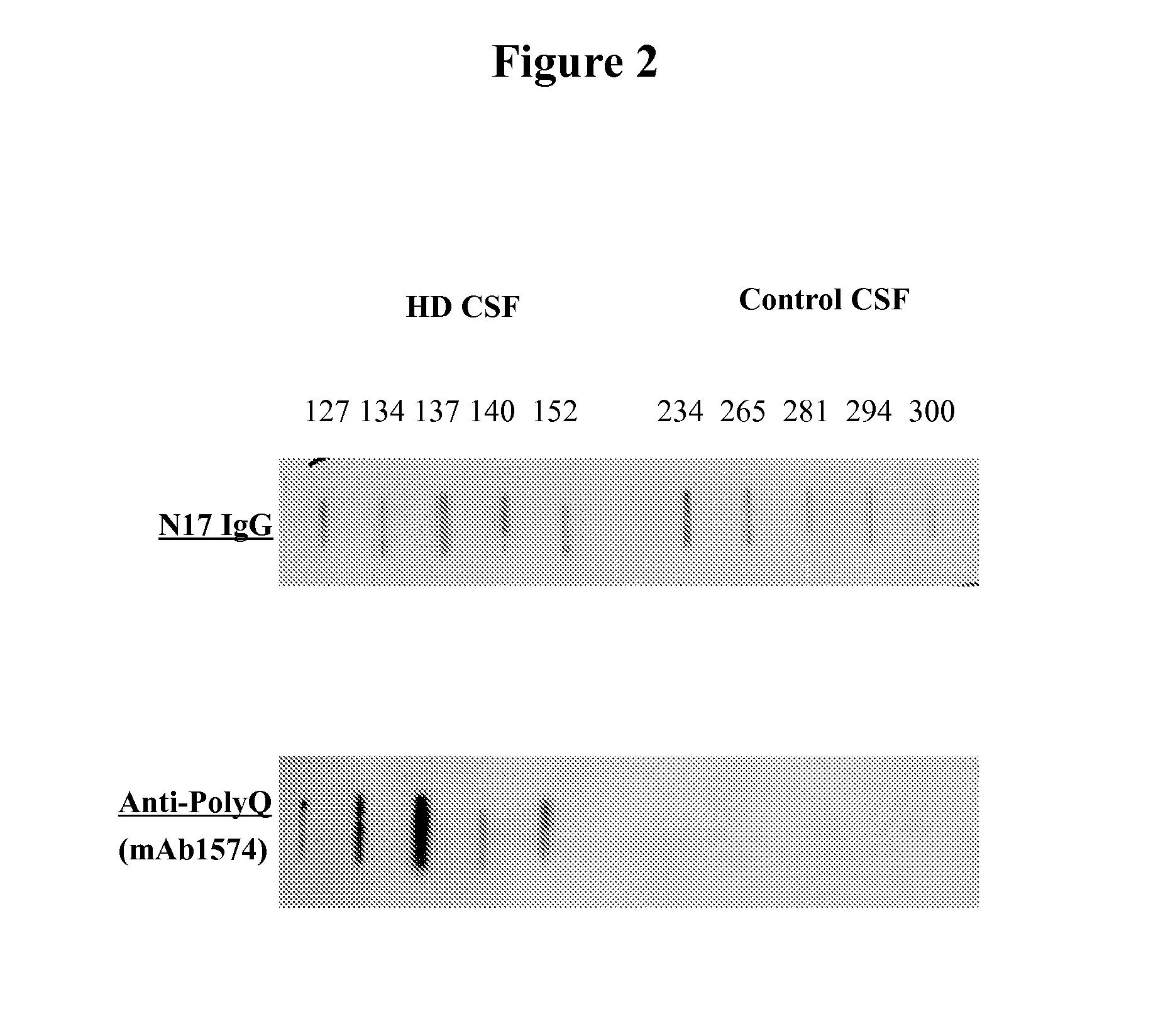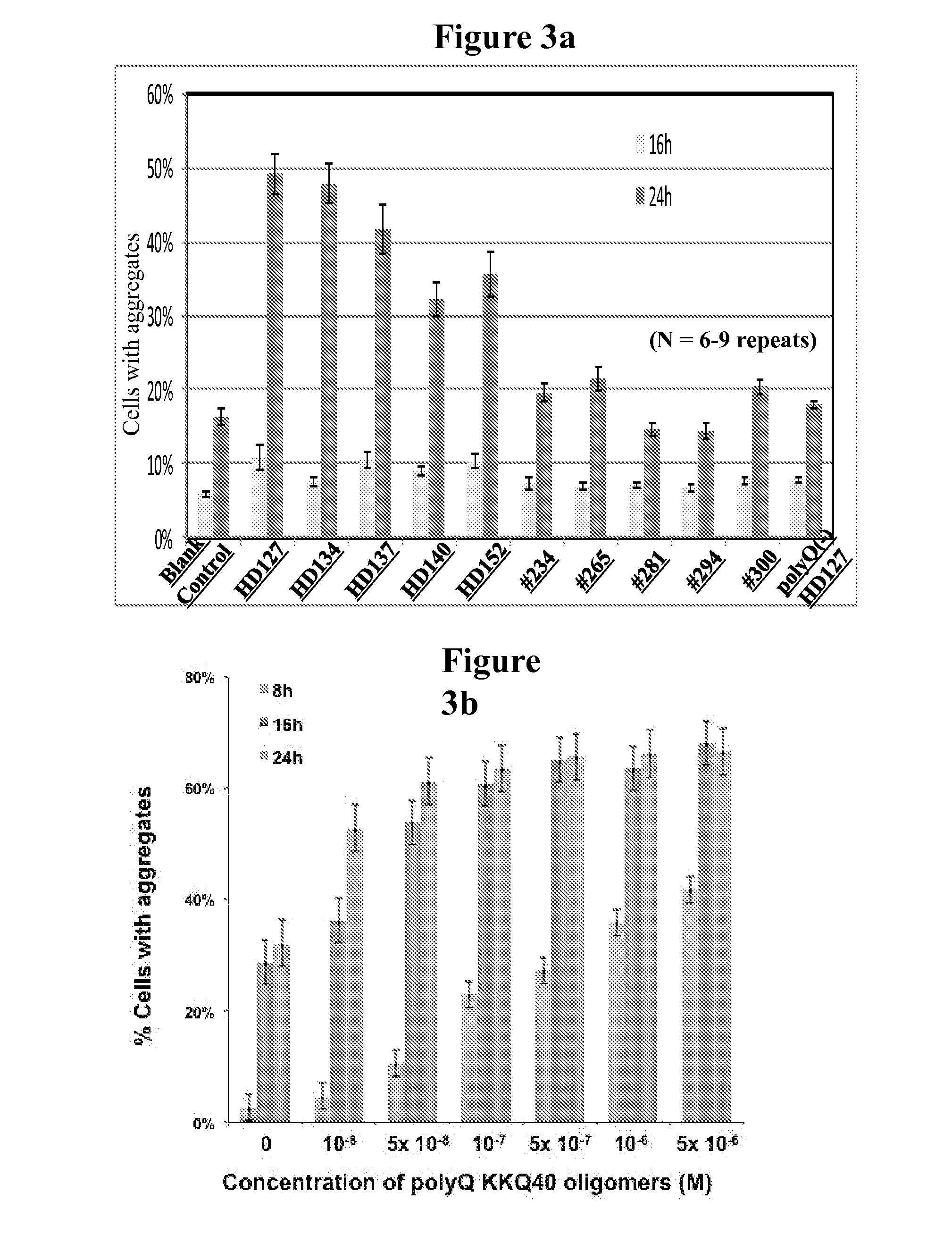Diagnostic and monitoring system for huntington's disease
a monitoring system and diagnostic technology, applied in the field of diagnostic and monitoring system for huntingtons disease, can solve the problems of insufficient sensitiveness and lack of efficient biomarkers
- Summary
- Abstract
- Description
- Claims
- Application Information
AI Technical Summary
Benefits of technology
Problems solved by technology
Method used
Image
Examples
example 1
Collection of Human Cerebral Spinal Fluid (CSF) Samples and Use in Cell Cultures
[0092]Human CSF from HD patients and non-HD individuals was obtained and then frozen at −80 degrees. Prior to the assay, thawed CSF samples were added to cell cultures in culture medium. The final CSF dilution was 3:100 in the culture medium. RGC5 and SH-SY5Y were grown in DMEM plus10% FBS. PC12 cells were grown in MEM / F12 with 10% horse serum and 5% FBS, 200 μg / ml Zeocin, and 50 μg / ml G418). Postmortem CSF were obtained from the UCLA CSF Tissue Bank. PREDICT CSF samples were provided by Coriell Institute for Medical Research. The dementia and control CSF were a gift from Dr. John Ringman at UCLA. They were prepared as follows: Lumbar punctures were performed using 22 (gravity drainage) or 24 gauge (aspiration via syringe) atraumatic Sprotte needles. Collected CSF was spun at 2620 rpms for 15 minutes and then aliquoted into 500 microliter polypropylene tubes, frozen and stored at −80 degrees centigrade w...
example 2
Detecting Huntingtin Protein using Dot Blot Assay
[0094]Httn protein was visualized using a dot blot assay. Briefly, the medium was removed from the cells and they were washed. Next the cells were lysed and bound to nitrocellulose or PVDF paper and washed. The bound samples were then exposed to an antibody directed to the N17 portion of Httn which is present in both HD and non-HD patients. In parallel, bound samples were exposed to the anti-polyglutamine (PolyQ) antibody mAb1574. The samples were washed and counterstained with an anti-IgG antibody bearing a chromophore. The filters were washed and visualized by autoradiography. (FIG. 2). Alternatively, the proteins were visualized by enhanced chemiluminescence (ECL, Amersham). In non-HD CSF, normal Httn was detected. In the HD CSF, there was an expanded polyglutamine protein that was detected and not found in the non-HD CSF. The mHttn in the HD CSF was decreased by the addition of anti-polyQ antibodies to the CSF prior to the assay. ...
example 3
Diagnostic Assay for Huntington's Disease using GFP Fluorescence Microscopy
[0096]The Httn aggregates were also quantified using GFP fluorescence as described in Sontag et al., Proc. Nat'l Acad. Sci. USA 110(8):3077-82 (2013) (incorporated herein by reference in its entirety). Briefly, 14A2.6 cells were grown as on UV-treated coverslips for 24 h and then induced with 2.0 or 2.5 μM PA for 16 or 24 hours. Cells were then fixed in 2% paraformaldehyde, permeabilized with 0.1% Triton X-100 in PBS, and nuclei were stained with 4′,6-diamidino-2-phenylindole. Fluorescent microscopy was performed using Axiovision software and a Zeiss AxioObserver.Z1 microscope. A minimum of 500 cells were counted from -5-6 fields in three independent experiments for each data point at 20× magnification. Aggregation is expressed as the percentage of cells with visible inclusions versus total number of cells. As shown in FIG. 3a, CSF taken from the Huntington's patients (HD127, HD134, HD137, HD140, and HD152) i...
PUM
| Property | Measurement | Unit |
|---|---|---|
| temperature | aaaaa | aaaaa |
| pH | aaaaa | aaaaa |
| pH | aaaaa | aaaaa |
Abstract
Description
Claims
Application Information
 Login to View More
Login to View More - R&D
- Intellectual Property
- Life Sciences
- Materials
- Tech Scout
- Unparalleled Data Quality
- Higher Quality Content
- 60% Fewer Hallucinations
Browse by: Latest US Patents, China's latest patents, Technical Efficacy Thesaurus, Application Domain, Technology Topic, Popular Technical Reports.
© 2025 PatSnap. All rights reserved.Legal|Privacy policy|Modern Slavery Act Transparency Statement|Sitemap|About US| Contact US: help@patsnap.com



